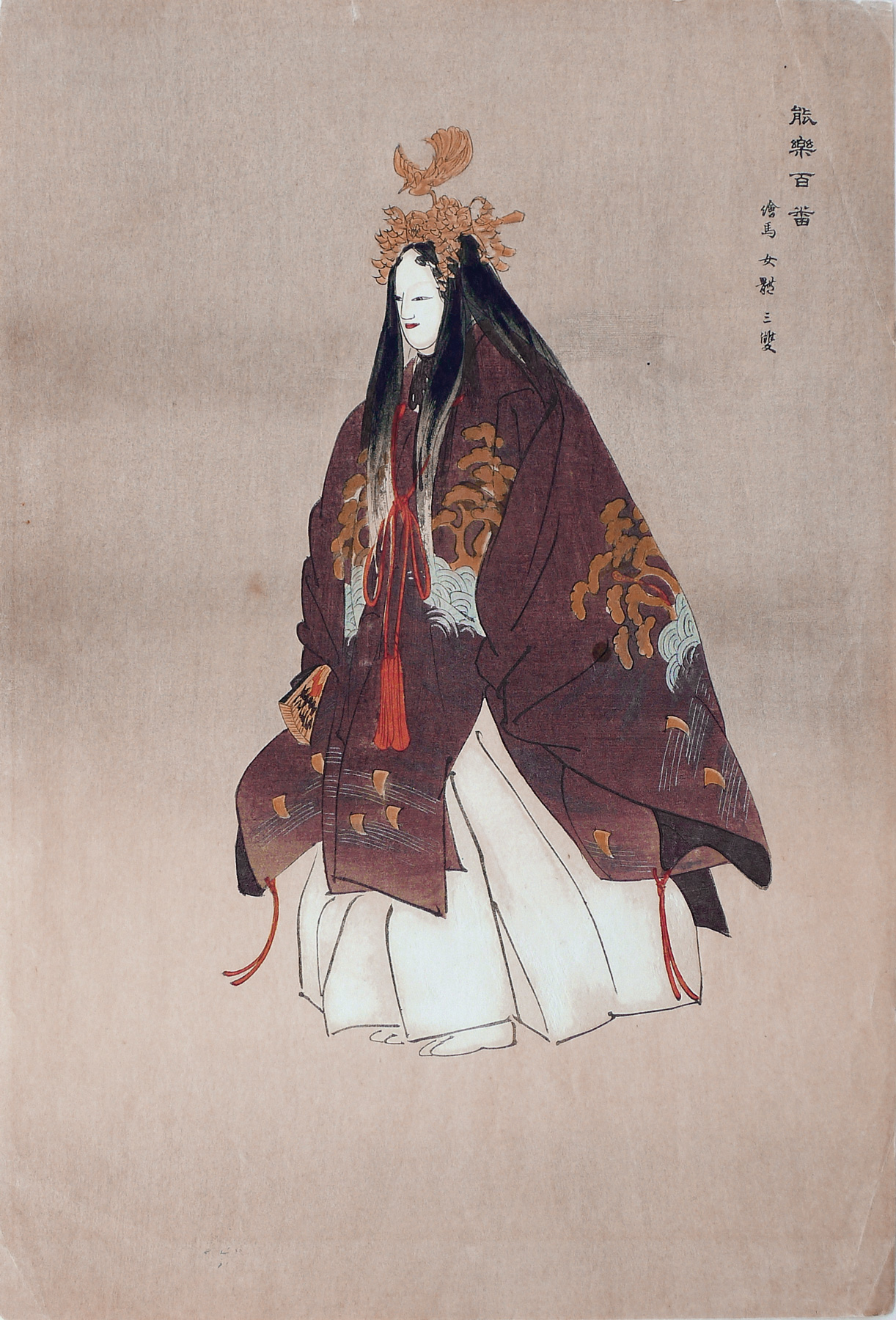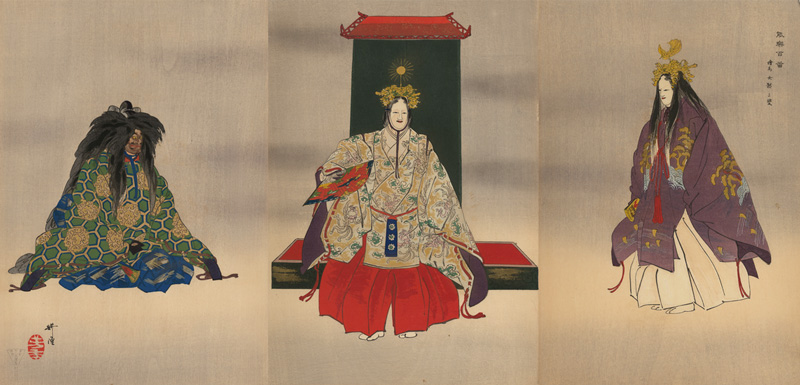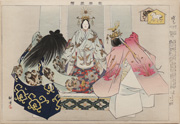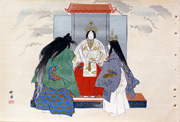About This Print
One of 120 prints issued as part of the series Nōgaku hyakuban (One Hundred Prints of Noh), it depicts a scene from the play Ema by an unknown playwright. This print is the right sheet of the triptych pictured below. This print was originally released by the publisher Matsuki Heikichi in the 30th installment of prints in this series. This series' prints were offered in monthly installments consisting of three prints packaged in an envelope with additional descriptive information.1The artist depicted this play in each of his three major print series as shown below.
Nōgakuzue, Ema,
1899
IHL Cat. #888
Nōga taikan, Ema
1926
IHL Cat. #727
1 “The series Nogaku hyakuban (100 No plays) by Tsukioka Kogyo (1869-1927),” Claus-Peter Schulz, Andon 67, Society for Japanese Arts, p. 28.
The Play - Ema
Source: A Guide to No, P.G. O'Neill, Hinoki Shoten, 1929, p. 26-28.An Imperial emissary on his way to the Great Shrines of Ise stops overnight at Saikū nearby as it happens to be the last day of winter and he hopes to see something of the votive tablets which are said to be hung up there during that particular night to foretell the fortunes of the coming year, a white one indicating sunny weather and a black one rain. He meets an old couple with such tablets who, after some discussion, agree to put up one of each kind to signify good fortune for everyone. They then disappear into the darkness after telling him that they are in fact two of the gods of Ise. In the second part Amaterasu, the Sun-goddess, appears with the goddess Uzume and the god Tajikarao and performs a dance. The three of them then depict the ancient story of Amaterasu’s withdrawal into a cave: as the world is plunged into darkness by her disappearance, the other gods dance and make merry and eventually succeed in enticing her out again by arousing her curiosity.
Print Details
| IHL Catalog | #1020 |
| Title | Ema 絵馬 (The Votive Tablets) 女体 三? |
| Series | Nōgaku hyakuban 能楽百番 (One Hundred Prints of Noh or One Hundred Noh Plays) |
| Artist | Tsukioka Kōgyo (1869-1927) |
| Signature | not signed - signature and seals are on left sheet of triptych |
| Seal | |
| Date | November 1925 |
| Edition | unknown |
| Publisher | Matsuki Heikichi (Daikokuya) |
| Carver | |
| Impression | excellent |
| Colors | excellent |
| Condition | good - backed; wrinkling in corners, two pea-size stains; minor soiling |
| Genre | ukiyo-e |
| Miscellaneous | right panel of triptych |
| Format | oban tate-e |
| H x W Paper | 14 7/8 x 10 1/8 in. (37.8 x 25.7 cm) |
| Collections This Print | Ruth Chandler Williamson Gallery, Scripps College 2007.1.100 (full triptych); Art Institute of Chicago 1943.834.50 (right panel only); Art Research Center, Ritsumeikan University AcNo.arcUP1346 CoGNo.arcUP1343AlGNo.arcUP1343; Japan Arts Council BK026-072 |
| Reference Literature | The Beauty of Silence: Nō and Nature Prints by Tsukioka Kōgyo (1869-1927), Robert Schaap & J. Thomas Rimer, Hotei Publishing, 2010, p. 90, p. 180. |





